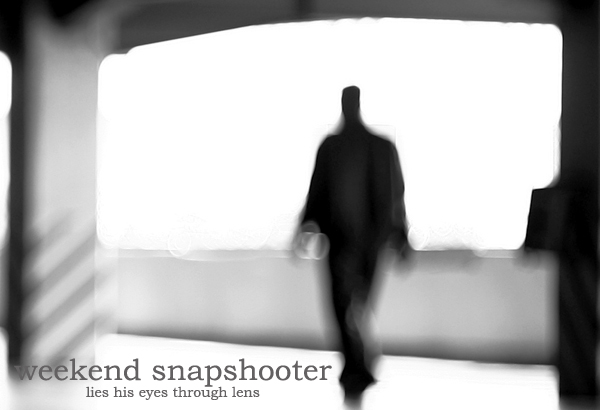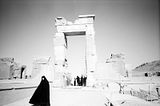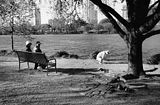



Busking is a British term used in many areas of the English-speaking world. Buskers are also called street performers or street musicians. The place where a busker performs is called their pitch. People busk for a variety of reasons, for money, for fun, for the attention they get, to socialize or meet people, for the love of their art, or to practise their skills or try out new material in front of an audience.
Some buskers only work part time, while others make a living performing full time on the streets. Some buskers do professional entertainment gigs in addition to working the streets. Some people manage only pocket change from busking, while others can amass substantial incomes. A busker's income depends on many conditions including, the type and quality of the performance, the composition of the audience, the weather, the location and the time of day. Competition from other buskers can also play a role.
Busking can be the bottom rung of the entertainment industry. Some of the most famous groups and superstars started their careers as buskers. Examples include Joan Baez, Roni Benise, The Blue Man Group, Pierce Brosnan, Jimmy Buffett, George Burns, Cirque du Soleil, Eric Clapton, Judy Collins, Bob Dylan, Joe Strummer, Stephane Grappelli, Bob Hope, Jewel, Steve Martin, Joni Mitchell, Jimmy Page, Dolly Parton, Penn & Teller, Gerry Rafferty, Carlos Santana, Simon and Garfunkel, Rod Stewart, Stomp, and Robin Williams. Many other buskers have also found fame and fortune.
Some buskers only work part time, while others make a living performing full time on the streets. Some buskers do professional entertainment gigs in addition to working the streets. Some people manage only pocket change from busking, while others can amass substantial incomes. A busker's income depends on many conditions including, the type and quality of the performance, the composition of the audience, the weather, the location and the time of day. Competition from other buskers can also play a role.
Busking can be the bottom rung of the entertainment industry. Some of the most famous groups and superstars started their careers as buskers. Examples include Joan Baez, Roni Benise, The Blue Man Group, Pierce Brosnan, Jimmy Buffett, George Burns, Cirque du Soleil, Eric Clapton, Judy Collins, Bob Dylan, Joe Strummer, Stephane Grappelli, Bob Hope, Jewel, Steve Martin, Joni Mitchell, Jimmy Page, Dolly Parton, Penn & Teller, Gerry Rafferty, Carlos Santana, Simon and Garfunkel, Rod Stewart, Stomp, and Robin Williams. Many other buskers have also found fame and fortune.
There are three basic forms of busking. Circle shows are shows that tend to gather a crowd around them. They usually have a distinct beginning and end. Usually these are done in conjunction with street theater, puppeteering, magicians, comedians, acrobats, jugglers and sometimes musicians. Circle shows can be the most lucrative. Some time the crowds attracted can be huge. A good busker will control the crowd so the patrons don't obstruct foot traffic.
Walk by acts are typically with the busker providing a musical or entertaining ambiance. There is no distinct beginning or end and the crowds do not particularly stop to watch. Sometimes an intended walk by act will spontaneously turn into a circle show.
Cafe busking is done mostly in restaurants, pubs, bars and cafes. Musicians and balloon artists can frequently be found using this venue. Making a living on the piano bar principle (i.e. for tips) is an experience practiced by many musicians. Perhaps one of the most famous of these is Billy Joel, who rose to fame from working in piano bars. His hit song "Piano Man" was written about a six month stint he did in 1972 at the "Executive Room" piano bar in Los Angeles.[1]
A bottler is a British term that describes the person with the job of collecting the money. A bottler may also be called the "hat man" or "pitch man". The term bottler came from a device old world performers used for collecting money. It was made from the top half of a glass bottle. It had a leather flap inserted in the bottle neck and a leather pouch attached. It was designed to allow coins in but not allow them to be removed easily without being noticed by the jingling of the coins against the glass. The first use of such contrivances was recorded by the famous Punch and Judy troupe of puppeteers in early Victorian times.[2] Bottling itself can be an art form, and the difference between a good and a bad bottler can be crucial to the amount of money earned on a pitch. A bottler usually gets a cut of the money made on the pitch, although it's not commonly a full share. In olden days it was common for buskers to use a monkey as a bottler. That practice has diminished due to animal control laws, but as tribute to the monkey's service there is a device known as monkey stick which buskers use to get attention. A monkey stick is a long stick with bottle caps or small cymbals attached such that they make an attention getting noise when shaken. It is frequently topped by a small monkey doll or figurine.
Walk by acts are typically with the busker providing a musical or entertaining ambiance. There is no distinct beginning or end and the crowds do not particularly stop to watch. Sometimes an intended walk by act will spontaneously turn into a circle show.
Cafe busking is done mostly in restaurants, pubs, bars and cafes. Musicians and balloon artists can frequently be found using this venue. Making a living on the piano bar principle (i.e. for tips) is an experience practiced by many musicians. Perhaps one of the most famous of these is Billy Joel, who rose to fame from working in piano bars. His hit song "Piano Man" was written about a six month stint he did in 1972 at the "Executive Room" piano bar in Los Angeles.[1]
A bottler is a British term that describes the person with the job of collecting the money. A bottler may also be called the "hat man" or "pitch man". The term bottler came from a device old world performers used for collecting money. It was made from the top half of a glass bottle. It had a leather flap inserted in the bottle neck and a leather pouch attached. It was designed to allow coins in but not allow them to be removed easily without being noticed by the jingling of the coins against the glass. The first use of such contrivances was recorded by the famous Punch and Judy troupe of puppeteers in early Victorian times.[2] Bottling itself can be an art form, and the difference between a good and a bad bottler can be crucial to the amount of money earned on a pitch. A bottler usually gets a cut of the money made on the pitch, although it's not commonly a full share. In olden days it was common for buskers to use a monkey as a bottler. That practice has diminished due to animal control laws, but as tribute to the monkey's service there is a device known as monkey stick which buskers use to get attention. A monkey stick is a long stick with bottle caps or small cymbals attached such that they make an attention getting noise when shaken. It is frequently topped by a small monkey doll or figurine.
Location can be the key. An act that might make money at one place and time may not work at all in another setting. Popular busking spots tend to be public places with large volumes of pedestrian traffic, high visibility, low background noise and as few elements of interference as possible. Good locations may include tourist spots, popular parks, entertainment districts including lots of restaurants, cafes, bars and pubs and theaters, subways and bus stops, outside the entrances to large concerts and sporting events, almost any plaza or town square as well as zócalos in Latin America and piazzas, and in other regions. Other places include shopping malls, strip malls, and outside of supermarkets and flea markets, although permission is usually required from management for these.
In her documentary movie and book, Underground Harmonies: Music and Politics in the Subways of New York (Anthropology of Contemporary Issues), Susie J. Tanenbaum talks about the old adage "Music hath charms to soothe the savage breast". Her sociological studies showed that in areas where buskers regularly perform, crime rates tended to go down. She also discovered that those with higher education tended to appreciate and support buskers more than those of lesser learning. Some cities are encouraging buskers because they can be a tonic to the stresses of shopping and commuting, and can be an influence which is entertaining and beneficial for all.[3] Some cities give preference to "approved" buskers in certain areas and even publish schedules of performances although in the USA they have to be careful that such things are not exclusionary, judgemental or discretionary.[4]
In the United States there has been a rebirth of this art form as the new millennium has started. Buskers are found at many locations: in New Orleans all over the place, in New York around Central Park and the subway systems, in San Francisco at Fisherman's Wharf area, Market Street, Union Square and the Cable Car turnarounds and BART stations, in Washington DC around the transit centers, in Los Angeles around Venice Beach, the Santa Monica Third Street Promenade, and the Hollywood area, in Chicago on Maxwell Street and many other locations throughout the US.
Busking is still quite common in Scotland, Ireland, and England with musicians and other street performers of varying talent levels.
In her documentary movie and book, Underground Harmonies: Music and Politics in the Subways of New York (Anthropology of Contemporary Issues), Susie J. Tanenbaum talks about the old adage "Music hath charms to soothe the savage breast". Her sociological studies showed that in areas where buskers regularly perform, crime rates tended to go down. She also discovered that those with higher education tended to appreciate and support buskers more than those of lesser learning. Some cities are encouraging buskers because they can be a tonic to the stresses of shopping and commuting, and can be an influence which is entertaining and beneficial for all.[3] Some cities give preference to "approved" buskers in certain areas and even publish schedules of performances although in the USA they have to be careful that such things are not exclusionary, judgemental or discretionary.[4]
In the United States there has been a rebirth of this art form as the new millennium has started. Buskers are found at many locations: in New Orleans all over the place, in New York around Central Park and the subway systems, in San Francisco at Fisherman's Wharf area, Market Street, Union Square and the Cable Car turnarounds and BART stations, in Washington DC around the transit centers, in Los Angeles around Venice Beach, the Santa Monica Third Street Promenade, and the Hollywood area, in Chicago on Maxwell Street and many other locations throughout the US.
Busking is still quite common in Scotland, Ireland, and England with musicians and other street performers of varying talent levels.



.jpg)





No comments:
Post a Comment